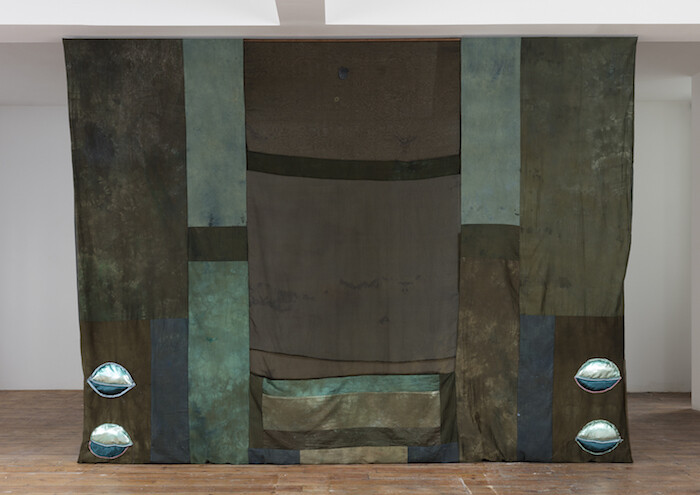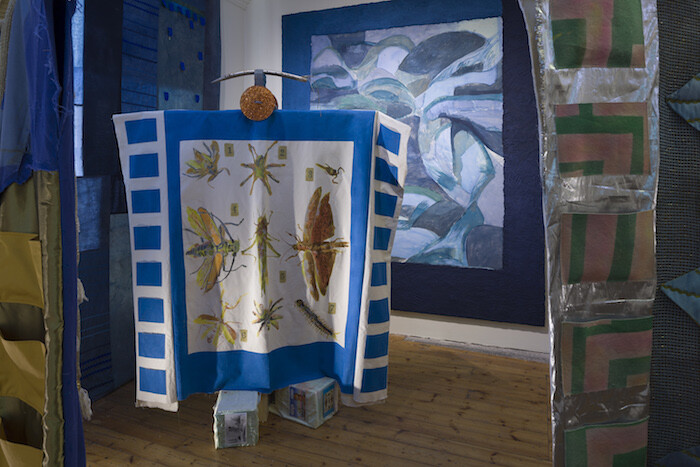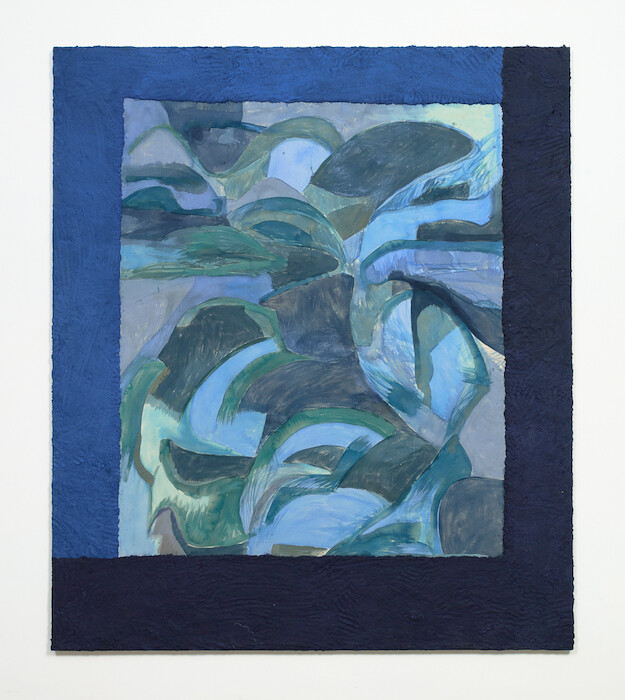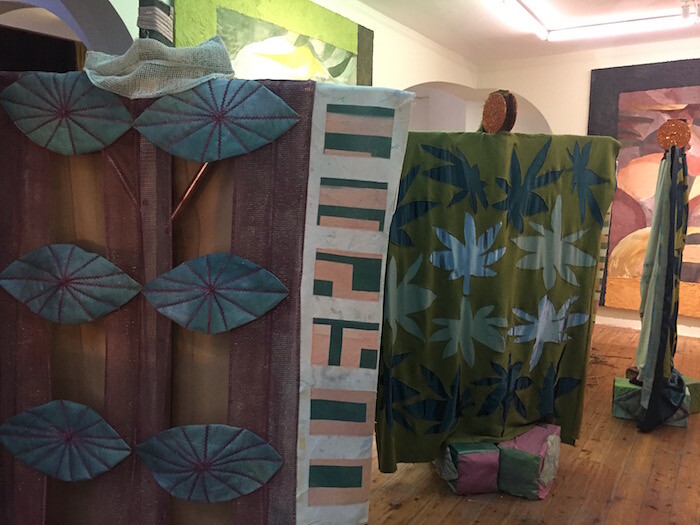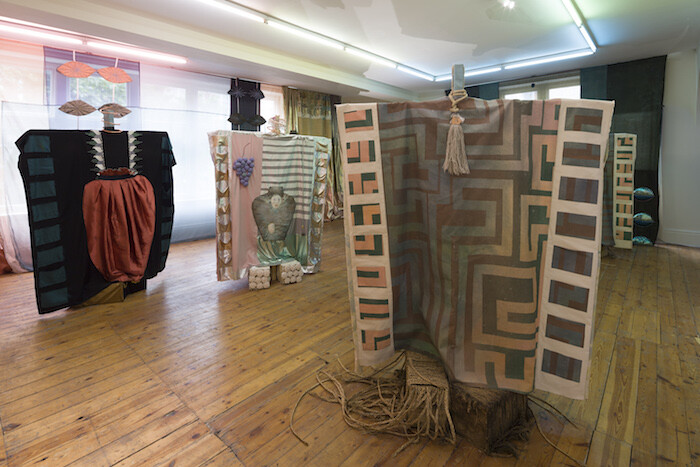May 17–July 29, 2017
A rule of thumb: hearing about other people’s trips abroad is boring. Another: hearing about their dreams is even worse. Given that the work of Tamara Henderson draws on the Canadian artist’s world-girdling nomadism (her CV is a litany of travel grants and residencies) and her own unconscious (past projects have seen her design quasi-modernist furniture while under hypnosis), then by rights it should function like a sleeping draught. In the best possible fashion, it does. To encounter the woozy, bewitching sculptures, paintings, and drawings that make up her exhibition “Seasons End: Panting Healer” at London’s Rodeo is to let slip the moorings of waking life and drift into a realm where stranger logics rule. As with dreams and drugs, or holidays and holy visions, perhaps the best advice with Henderson’s work is simply to go with it, and see where we fetch up.
First, though, some backstory. The Rodeo show is the third iteration of the artist’s “Seasons End” project, following those at the Mitchell Library (part of Glasgow International) and Los Angeles’s REDCAT in 2016 (two more are planned for 2017: a performance as part of London’s Serpentine Galleries’ “Park Nights” season on July 21 and an exhibition at Ontario’s Oakville Galleries, opening on September 24). In Glasgow, Henderson presented a large-scale diorama, centered on the Garden Photographer Scarecrow (all works 2016), a totemic, if rather rickety female figure made from foliage, lumpy upholstery, and tourist trinkets from Loch Ness. This piece was accompanied, among other elements, by 24 anthropomorphic sculptures, consisting of kimono-like garments on upright wooden supports, their fabric trimmed with a design resembling the sprocket holes found on rolls of film, and decorated with images and materials that alluded to the passing of time, including moon phases, dried potpourri flowers, and aging newspapers. The governing conceit, here, was that when the Mitchell was empty, the Scarecrow would record her surroundings using a pinhole camera. (By way of “proof,” the walls of Rodeo’s front office feature several grainy black-and-white shots of the diorama installed in the library’s grand Victorian reading room). As the artist has it: “While she stands she remembers; while she remembers she photographs; her nervous system is a system of flashbulbs.”
By the time the Scarecrow reappeared at REDCAT, she was no longer standing, and so presumably no longer remembering or taking photos. Lying moribund on a makeshift bed, her dehydrated vegetation crumbling onto the floor, she was ministered to by one of the garment sculptures, Panting Healer, whose white lace robes suggested at once a bride, a medic, and an angel. Following the REDCAT show, the Scarecrow was apparently cremated on a Californian beach. She is survived by Panting Healer, who features at Rodeo alongside 18 of its 23 compatriots. Positioned around the gallery space in loose duos and trios, they seem to be taking in Henderson’s paintings, such as The Camel and the Snail, in which the animal energies of an early twentieth-century Der Blaue Reiter canvas appear to have been becalmed by abstraction and a palette of dusty browns. Is this a private view? Maybe, although given the Scarecrow’s recent demise, it’s hard not to think of the garment sculptures as mourners at a wake.
Walking among these figures, we note their strange adornments: here a fascinator formed from a curling seashell, there a pair of boots stuck with postcards of a thistle, the grouchy cartoon cat Garfield, and a gleaming Brancusi bronze. The gallery space itself feels like it’s been prepped for some obscure ceremony, to which we may or may not have been invited. Glitchy music (is it a calypso?) plays on hidden speakers, the lighting rig is hung with colored neon strips, and the windows are draped with patchwork textiles, bearing images of hooded, slumbering eyes. While “Seasons End: Panting Healer” is, on one level, a feverish reverie, it also casts visitors in the role of anthropologists, conducting fieldwork among a previously unknown people. Studying the garment sculptures, we recognize that they are preoccupied, like all human-shaped beings, with the circle of night and day, of death and (re)birth, of seeds reaped and sown. Nevertheless, the precise contours of their cosmology remain naggingly unclear.
This elusiveness is all to the good. The power of Henderson’s art turns on the combination of its discombobulating surface detail and its ability to tug at something deep within us—the dim reaches of cultural memory, perhaps, or our fizzing lizard brains. While a garment sculpture such as Silverfish in Tuxedo (which features a swatch of foil emergency blanket, a brass dolphin, and a sprat-shaped key fob) appears to hum with hermetic symbolism, the artist is disinclined to provide a Rosetta Stone. Instead, we must rely on the stray visions this work prompts: of sunlight flashing through seawater onto panicked, darting fins; of adrenaline pumping through both predator and prey; of unruly life on the cusp of unruly death. Even the haziest dream world, it seems, has it moments of pin-sharp clarity.


